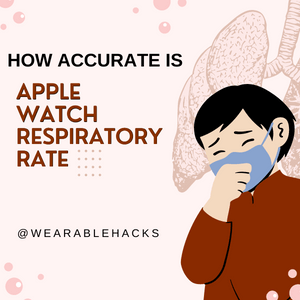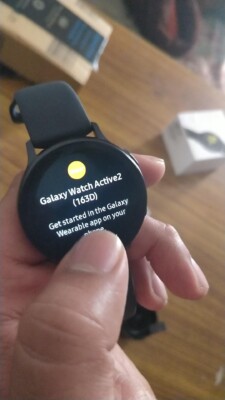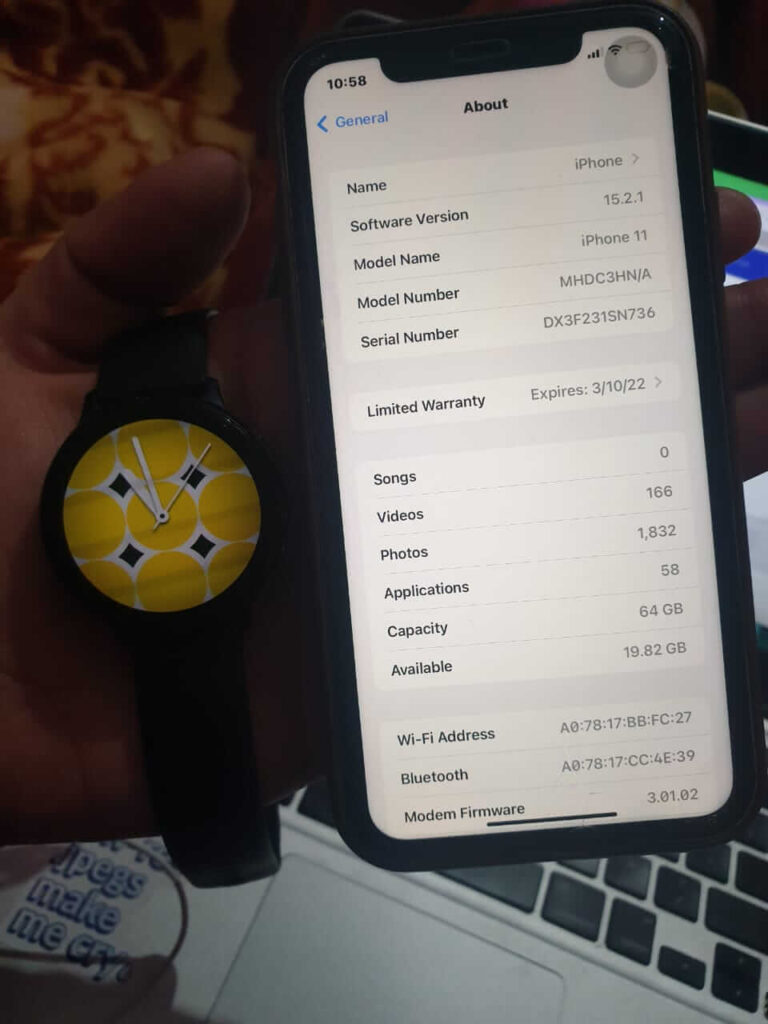How Accurate Is Apple Watch Respiratory Rate
The accuracy of the respiratory rate measurement on the Apple Watch has been a topic of interest for many users. Therefore, the various studies you will learn about in this article have evaluated its respiratory rate accuracy.
The Apple Watch has a mean absolute error of 2.49 breaths per minute compared to a reference standard measurement of respiratory rate. The lower mean absolute error indicates a higher level of accuracy for the Apple Watch.
Therefore, Apple Watch’s respiratory rate accuracy is clinically acceptable for healthy individuals. You will learn more about the Apple Watch’s respiratory accuracy compared to other wearable devices below. But first, let’s look at how the Apple Watch measures respiratory rate.
How does the Apple Watch measure respiratory rate?
The Apple Watch uses a combination of sensors to measure respiratory rate. These include the smartwatch’s optical heart rate sensor and accelerometer. The optical heart rate sensor uses LED lights and photodiodes to measure the amount of blood flow in the wrist. In contrast, the accelerometer measures the watch’s movement as you breathe.
The Apple Watch’s respiratory rate measurement feature uses an algorithm to process the data collected by these sensors and calculates the respiratory rate in breaths per minute. The algorithm considers the variability in the data and your heart rate and movement to provide a more accurate respiratory rate measurement.
Note that the Apple Watch’s respiratory rate measurement accuracy may be affected by factors such as:
- Body position
- Movement
- and level of physical activity.
In addition, the measurement accuracy may vary in individuals with certain medical conditions like asthma or chronic obstructive pulmonary disease (COPD).
But don’t worry. I will give you some tips at the end of this article to improve your Apple Watch’s respiratory rate accuracy. Generally, the Apple Watch’s respiratory rate measurement feature provides a convenient and non-invasive way to monitor respiratory rate regularly.
However, it is essential to use the feature as part of a broader self-monitoring strategy and consult with a healthcare provider if you have any concerns about your respiratory health. But why choose the Apple Watch over other wearable devices like Fitbit or chest-mounted respiratory rate monitoring devices?
Apple Watch’s respiratory rate accuracy vs other wearable devices
A smartwatch’s mean absolute error (MAE) is calculated by taking the absolute difference between the measured value and the reference standard value and then averaging those differences over a sample of respiratory measurements.
According to a recent comparison, the Apple Watch’s respiratory rate measurement had a mean absolute error of 3.48 breaths per minute compared to a chest-mounted respiratory rate monitoring device. In contrast, the chest-mounted device had a mean absolute error of 1.35 breaths per minute.
Another study found that the Apple Watch’s respiratory rate measurement had a mean absolute error of 2.91 breaths per minute compared to a reference standard measurement. Some reference standards for measuring respiratory rate include manual count, auscultation, and capnography.
In this context, a mean absolute error of 2.91 breaths per minute (for Apple Watch) means that, on average, the device measures respiratory rate with an error of 2.91 breaths per minute compared to a reference standard measurement.
The study also compared the Fitbit Charge HR to a reference standard measurement and found a mean absolute error of 3.48 breaths per minute.
In short, a lower mean absolute error indicates a higher level of accuracy for the device. Thus, a mean absolute error of 1.35 breaths per minute – as per the chest-mounted device – shows a higher level of accuracy than a mean absolute error of 2.91 or 3.48 breaths per minute.
Therefore, a chest-mounted device is more accurate in measuring your respiratory rate than an Apple Watch, which is also more accurate than Fitbit. Nevertheless, the Apple Watch’s level of accuracy is clinically acceptable for monitoring respiratory rates in healthy people.
However, it is worth noting that the accuracy of the Apple Watch’s respiratory rate measurement may vary depending on the specific device or method used for comparison.
So, what can you do to improve your Apple Watch’s respiratory rate accuracy?
Learn more tips below.
Tips for improving your Apple Watch’s respiratory rate accuracy
Here are five tips to improve the accuracy of the Apple Watch’s respiratory rate measurement:
1. Wear the Apple Watch properly
Ensure that the Apple Watch is worn snugly on your wrist, with the back of the watch in contact with your skin. It will ensure that the optical heart rate sensor and accelerometer can accurately measure your respiratory rate.
2. Avoid external factors that may interfere with the measurement
The Apple Watch’s respiratory rate measurement may be affected by external factors such as sunlight, tattoos, or other light or heat sources. To improve accuracy, try to minimize these types of interference when taking a respiratory rate measurement.
3. Stay still and measure your respiratory rate in a quiet place
It is crucial to remain still and avoid talking or moving while taking a respiratory rate measurement. The measurement may also be more accurate if taken in a quiet environment, as background noise can interfere with the accuracy of the results.
4. Don’t use your Apple Watch’s respiratory rate measurement during intense physical activity
The Apple Watch’s respiratory rate measurement may not be as accurate during periods of intense physical activity, as the watch’s movement may interfere with the accuracy of the measurement.
5. Use the Apple Watch’s respiratory rate measurement as part of a broader self-monitoring strategy
You should not solely use the Apple Watch’s respiratory rate measurement to monitor respiratory rate. Instead, use it as part of a more comprehensive self-monitoring strategy that includes other methods of monitoring respiratory rate. Most importantly, consult a healthcare provider if there are any concerns about respiratory health.
By following these tips, you can help improve the Apple Watch’s respiratory rate accuracy and use the smartwatch more effectively as part of your self-monitoring routine.
Conclusion
The Apple Watch has a mean absolute error of 2.49 breaths per minute compared to a reference standard measurement. Thus, the Apple Watch is considered clinically acceptable for monitoring respiratory rates in healthy individuals.
However, its accuracy may be affected by factors like your body position, movement, level of physical activity, and medical conditions.
To improve the accuracy of the Apple Watch’s respiratory rate measurement, wear the smartwatch properly, avoid external factors that may interfere with the process, remain still and take the measure in a quiet environment. Also, avoid using the feature during intense physical activity, and use it only as part of a broader self-monitoring strategy.
Following these tips will ensure that your Apple Watch’s respiratory rate measurement is as accurate as possible.







